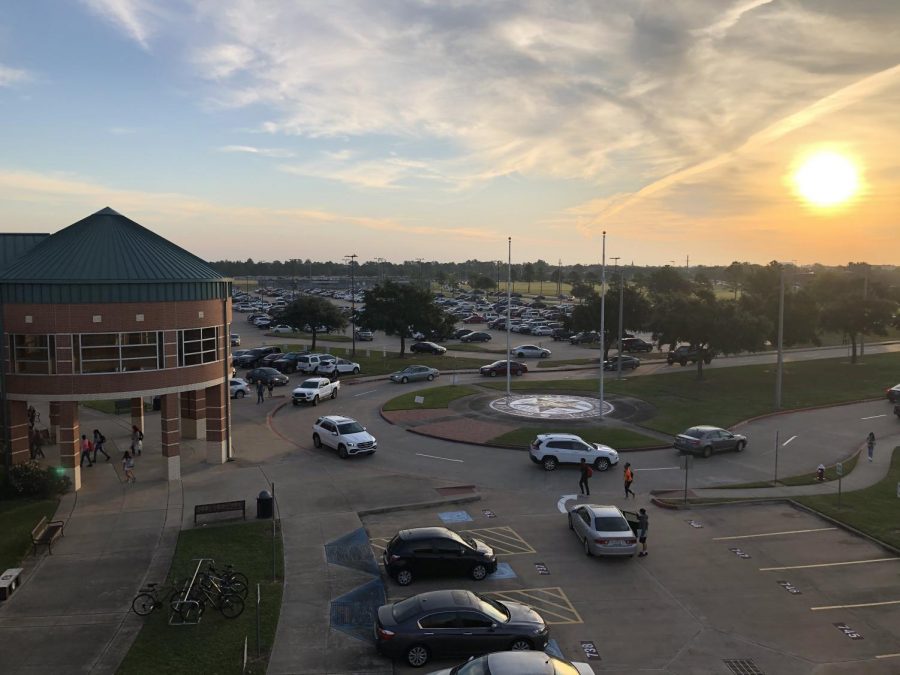KVA Conundrum
Teachers face new set of challenges with virtual instruction
After a difficult and chaotic year, many teachers are eager for a return to normalcy.
March 11, 2021
“I want to see faces again,” math teacher Sherri Scott said. “I miss those smiles.”
Online instruction and in-person restrictions have forced many teachers to adapt their lesson plans to better fit simultaneous Katy Virtual Academy (KVA) and face to face instruction. When she first got word that students would have the option to learn virtually this year, science teacher Sherri Wagner knew that she had to immediately revise her schedule.
“In a normal year, teachers invest a lot of time creating and implementing new activities to engage learners for certain lessons, but we rarely change every lesson in every unit,” AP science teacher Sherri Wagner said. “That is what we have had to do this year in order to teach both in-person and online students and my time investment outside of class hours is substantial each week. Each lesson has to be planned with both learning platforms in mind which means that every traditional “paper” assignment or activity has to also be converted to a digital format that students can type into easily. This is an added burden for teachers like me who do not have a team. Everything has to be done by one person rather than dividing the load among several people.”
Digital instruction has also led some teachers to embrace digital grading and assessment. The Katy ISD Canvas platform has led many to rewrite assignments to better suit an asynchronous format.
“Grading seems to take more time online when it comes to written assignments,” Shireen Carroll, English and Creative Writing teacher, said. “When you have more objective assignments such as multiple choice assessments, it is much faster since the computer can grade that for you. It’s one thing if everyone is either all face to face or all online, but when it’s 50/50 you often feel stuck compromising how you teach in order to meet both sets of students’ needs.”
However, teachers have been forced to adapt more than just lesson plans. Everyday interaction between students, especially in small classes, has to be scheduled into each class period. Scott includes structured social interaction between in-person and KVA students in order to “benefit the kids”.
“For starters from day one I required cameras on,” Scott said. “I start every day greeting all my students and allow for a little banter between the KVA and face to face students. I turn the camera towards the classroom so the online students feel more a part of the class. I love group activities so the breakout rooms prove beneficial for the KVA students.”
In addition to adapting to simultaneous instruction, teachers are also tasked with monitoring students to make sure they are in compliance with Katy ISD health and safety protocol. School staff must ensure that students wear a mask over their nose and mouth, wipe down their desks with disinfectant before each class period, and report to the school nurse if they experience any symptoms.
“I have to remind students of health and safety protocols all the time,” spanish teacher Adriana Pacheco said. “I know it’s still something that not everyone is used to, especially with students. I think it’s sometimes easy to forget or get comfortable and we must remember that Covid isn’t over yet and taking precautions is still advised and important to mitigate any spread between staff and students.”
KVA also poses its own unique set of challenges. Engaging students through a screen and holding their attention despite ample distraction and zoom fatigue can be difficult, Carroll said.
“We try to do what we can,” Carroll said. “But physically being in the classroom space with other people doing the work and having the conversations makes such a big difference. Even when breaking KVA students into smaller zoom breakout rooms, it is only effective when the students commit to participate and the teacher has something in place to hold them accountable. But at the end of the day, each individual has to choose to be invested in their learning to some degree.”
Wagner, as the only AP Biology teacher on campus, has experienced similar difficulties in engaging KVA students.
“It has been a challenge to make sure that I am including all students in instruction,” science teacher Sherri Wagner said. “If I ask a question in class and direct it to my KVA students, then my F2F students do not have my attention. If I ask a question in class and direct it to my F2F students, then my KVA students do not have my attention. It has been a challenge to keep students engaged.”
Since first engaging in virtual instruction, many teachers have sought out independent technology through online discussion boards or collaborative apps like Flipgrid or PearDeck to include both groups of students simultaneously. Labs and group assignments have had to be adapted or cut out of the curriculum entirely.
“I’ve used Canvas discussions, zoom breakout rooms, and I have been experimenting with peer review features in Canvas and Flipgrid,” Carroll said. “I still haven’t settled on perfecting either of these yet, but I’m trying and I’m learning. I constantly ask the students to be patient with me, and to realize we won’t know if we don’t try and that failure is part of the learning process for all of us.”
After a difficult and chaotic year, many teachers are eager for a return to normalcy.
“My hopes are for crowded stadiums, gyms, sold out performances for choir and theatre, and packed hallways,” Scott said. “I want to have to think like a running back to maneuver my way from one end of the building to the other. I want a year where the time is not spent on technology issues, but rather on building relationships with my students and preparing lessons to give them the learning experience they deserve.”


